Installation Overview
4 minute read
Overview
Edge Delta supports a range of installation methods tailored to different environments and operational requirements. You can deploy pipelines in Kubernetes clusters, on virtual machines, in containerized environments, or entirely within the cloud using Edge Delta’s managed cloud pipelines.
At the core of the system is the pipeline, which represents a collection of agents with a shared configuration. A pipeline defines how telemetry data is ingested, processed, and routed. Once a pipeline is configured, it can be deployed into your environment, where agents execute the defined logic. Typically, each pipeline corresponds to a single cluster or compute unit, but Edge Delta supports multi-cluster and multi-tenant strategies as well.
Note: Deploy only one pipeline per host or cluster. Installing multiple pipelines (with different API keys) on the same host causes duplicate data collection, increased resource consumption, and potential conflicts. If you need to process different data sources differently, configure multiple source nodes within a single pipeline rather than deploying separate pipelines.
Pipeline Types
Node Pipeline
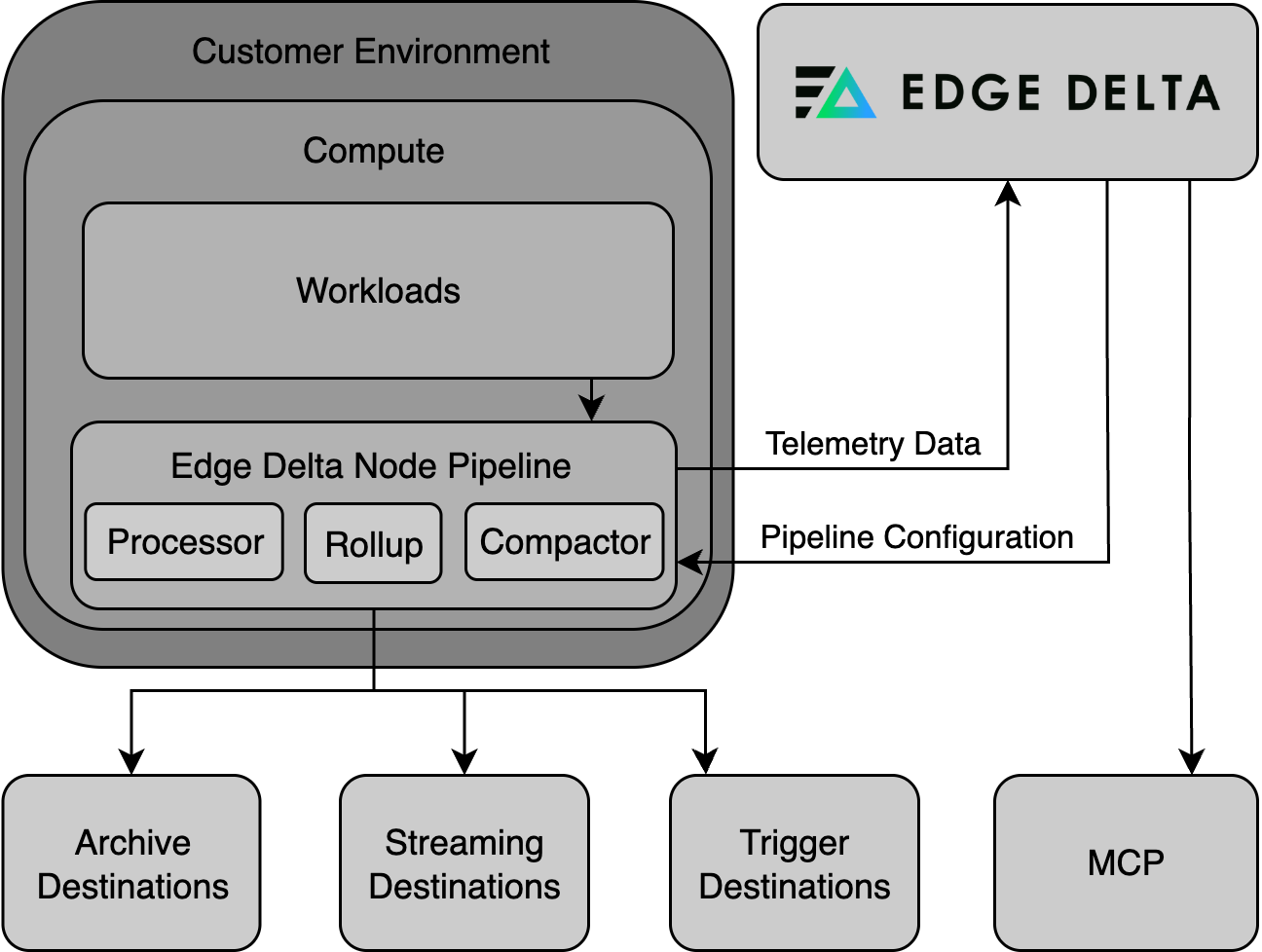
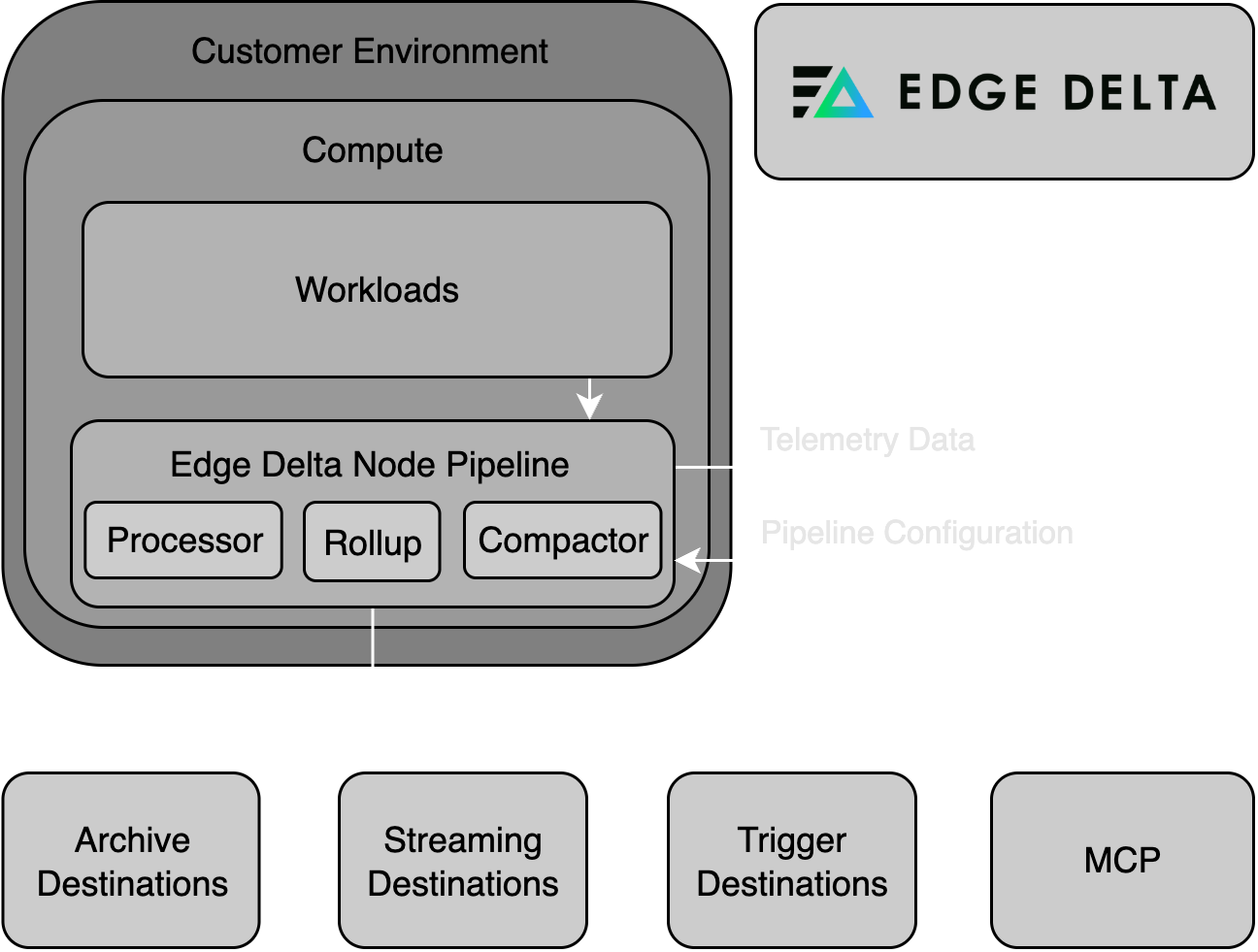
Node pipelines consist of agents deployed directly into your environment. These agents collect telemetry data, process it locally, and forward optimized outputs to the Edge Delta Observability Platform or any configured destination. Node pipelines are supported in the following environments:
- Kubernetes
- Linux
- Docker
- Amazon ECS
- macOS
- Windows
- OpenShift
- SELinux-enforced Kubernetes clusters
In Kubernetes, the node pipeline can include:
- Processing Agent: Executes the pipeline configuration and processes telemetry.
- Compactor Agent: Compresses and encodes data for storage efficiency.
- Rollup Agent: Aggregates and optimizes high-cardinality metric data.
Gateway Pipeline
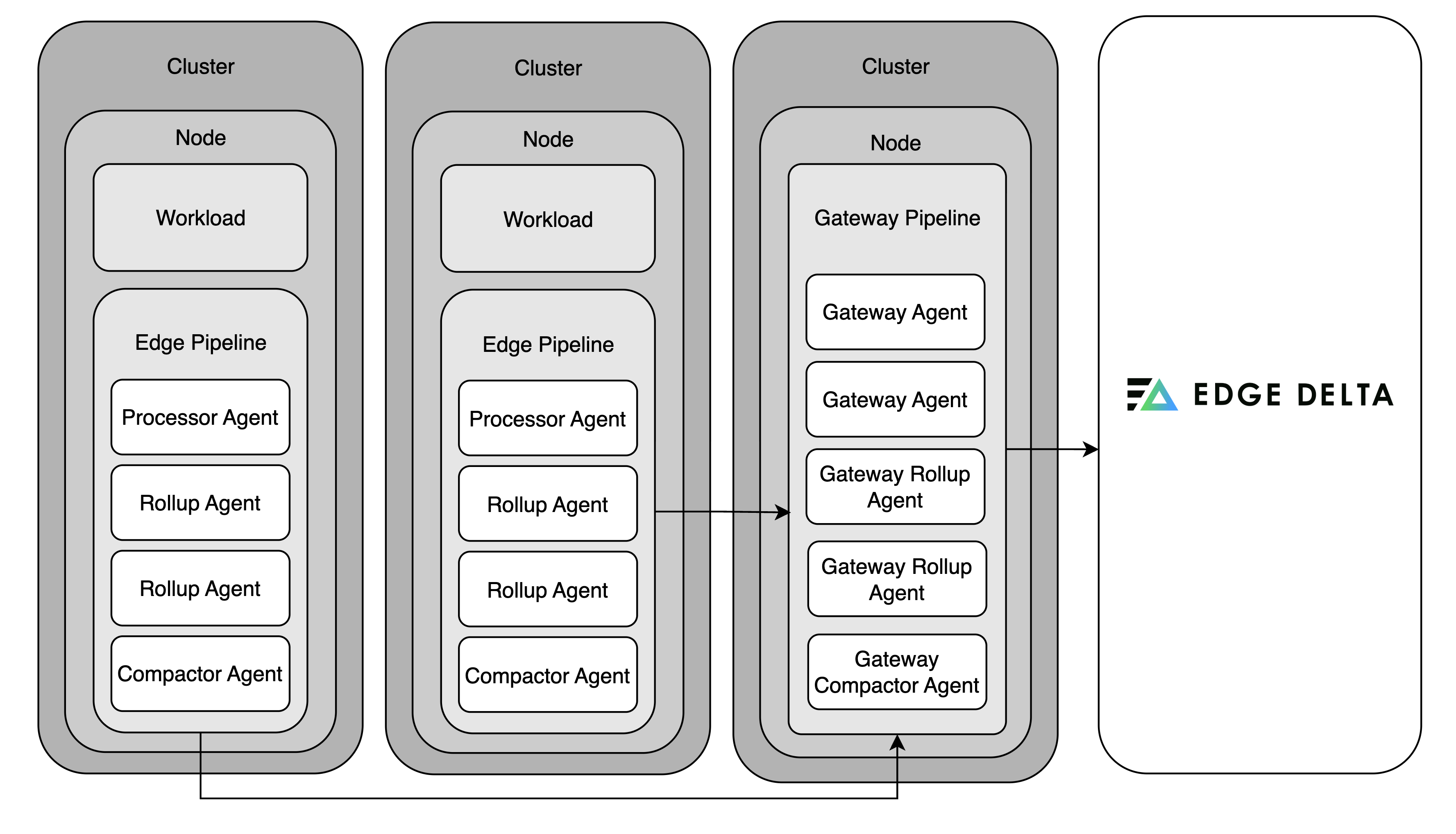
Note: Gateway pipelines are currently only available for Kubernetes deployments.
Gateway pipelines serve as aggregation hubs. They collect telemetry from node pipelines and external inputs, enabling service-level metric aggregation, log deduplication, and advanced features like trace tail sampling.
Since individual agents cannot see the full span of a trace, gateway pipelines are required for making intelligent trace sampling decisions. They buffer spans in memory or on disk, then apply logic to retain only the most valuable traces (e.g., errors or latency outliers).
Gateways can also ingest external data, making them useful for aggregating multiple telemetry streams into a unified processing pipeline.
Coordinator Pipeline
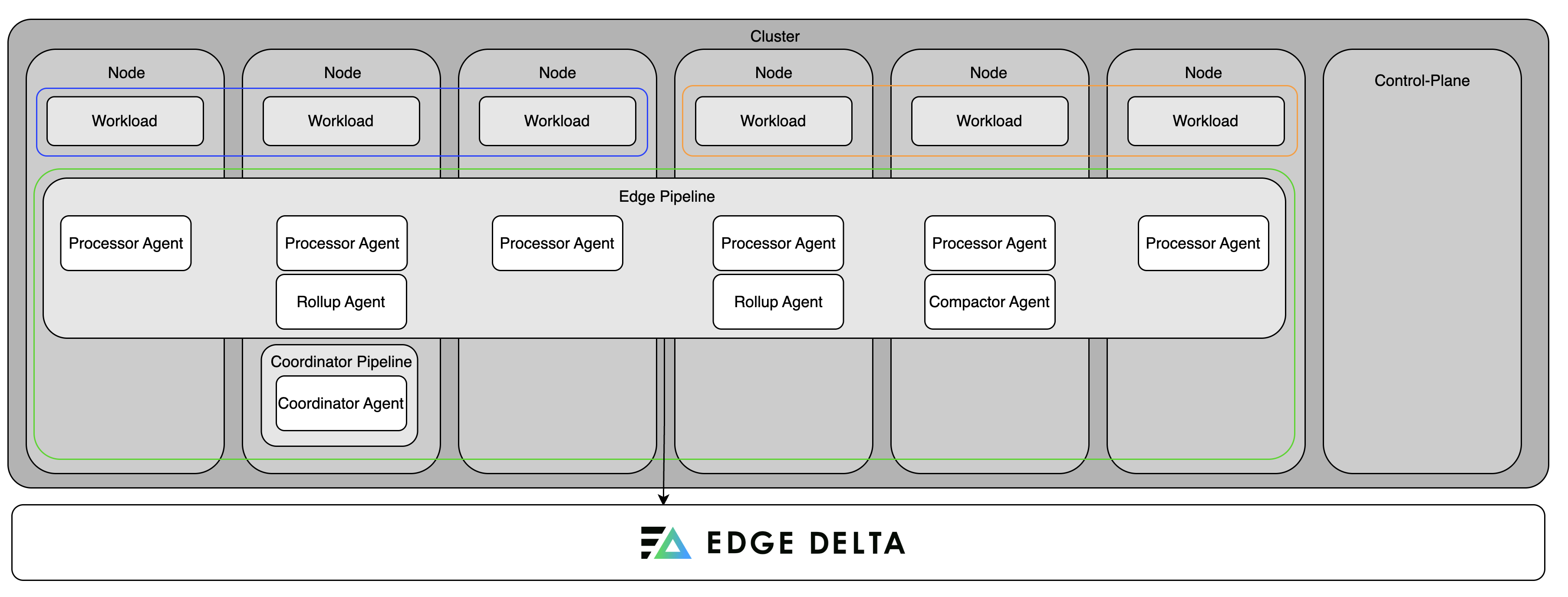
Note: Coordinator pipelines are currently only available for Kubernetes deployments.
Coordinator pipelines manage control-plane operations in Kubernetes clusters. They handle backend communication on behalf of node agents, assist with discovery and agent grouping, and ensure efficient operation in large or dynamic environments.
Only one coordinator pipeline is deployed per cluster, and it must be installed in the same namespace as the agents it manages.
Note: In a cluster with multiple nodes, on the leader node data is collected by live capture if you do not have a coordinator pipeline deployed in the pipeline. With a coordinator deployed, the data from the top 5 producing nodes is included in live capture.
Cloud Pipelines (Agentless)
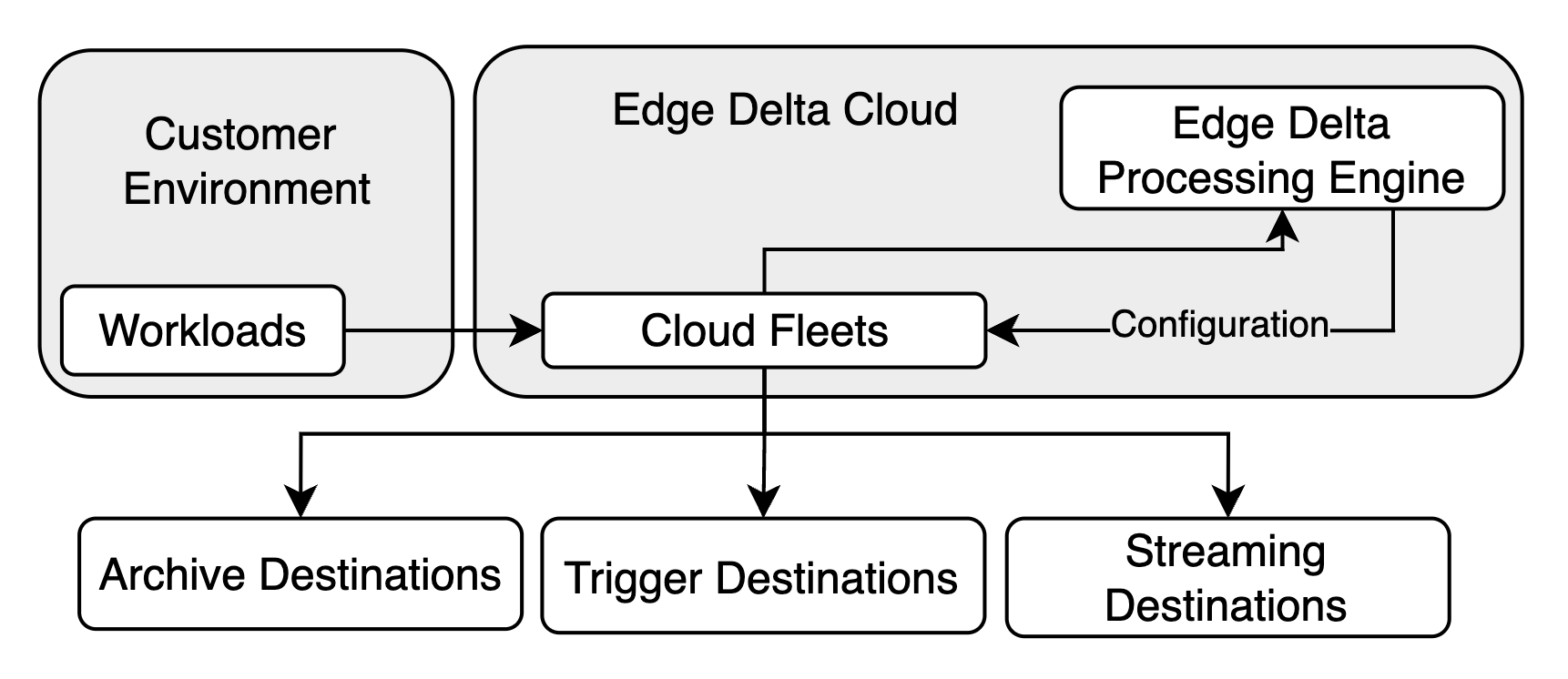
Cloud pipelines are hosted and fully managed by Edge Delta. They eliminate the need to run agents within your environment and are ideal for:
- Serverless workloads (e.g., AWS Lambda)
- Event-based systems (e.g., Amazon Kinesis)
- Thin edge devices or IoT
- Security-restricted environments
These pipelines expose HTTP, HTTPS, or GRPCS endpoints for pushing data, or they can be configured to pull data using source nodes like HTTP Pull.
Cloud pipelines are particularly effective when you want to minimize infrastructure management or centralize telemetry processing without agent deployment.
OpenTelemetry and Third-Party Agent Support
Edge Delta integrates with OpenTelemetry (OTEL) to support both direct application instrumentation and intermediary collection via OTEL Collector. You can send OTEL-formatted telemetry to Edge Delta in the following ways:
- From instrumented applications directly to a local node pipeline agent or a cloud pipeline endpoint
- Via an OTEL Collector, configured to export data to Edge Delta’s agents or cloud pipeline endpoints
This flexibility allows organizations to adopt Edge Delta without re-instrumenting existing workloads and to consolidate telemetry from diverse ecosystems. You can also use other third-party agents or services to push data to Edge Delta cloud pipelines using supported protocols.
Choosing a Deployment Method
| Environment | Node Pipeline | Gateway | Coordinator | Cloud Pipeline |
|---|---|---|---|---|
| Kubernetes | ✅ | ✅ | ✅ | Optional |
| Linux | ✅ | ❌ | ❌ | Optional |
| Docker | ✅ | ❌ | ❌ | Optional |
| Amazon ECS | ✅ | ❌ | ❌ | Optional |
| macOS | ✅ | ❌ | ❌ | Optional |
| Windows | ✅ | ❌ | ❌ | Optional |
| OpenShift | ✅ | ✅ (via Kubernetes) | ✅ (via Kubernetes) | Optional |
| SELinux Enforced | ✅ | ✅ | ✅ | Optional |
| Serverless / IoT | ❌ | ❌ | ❌ | ✅ |
Next Steps
- Review the System Requirements
- Choose your installation method:
- Review Advanced Deployment Patterns for federation, scaling, and multi-tenant strategies.